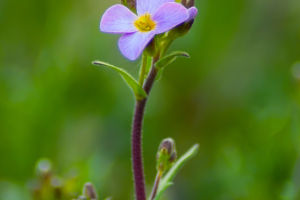Trees play an extremely important role in human life, not only by providing us with oxygen, wood, and food but also by beautifying the environment and regulating the climate.
However, the question of how long trees live is often a matter of curiosity. The lifespan of trees varies greatly, ranging from a few years to thousands of years, and is affected by many factors, including tree species, environmental conditions, pests, and diseases.
Tree lifespans differ among species. Generally, herbaceous plants have shorter lifespans, while woody plants (trees) tend to live much longer. Tree lifespans can be roughly divided into short-lived species, medium-lived species, and long-lived species.
Short-lived species, such as willows and poplars, usually have a lifespan of between 20-50 years. Medium-lived species, such as oaks and maples, can typically live up to 150-200 years. Long-lived species, such as redwoods and walnut trees, can survive for hundreds of years.
The world's longest-lived trees are typically conifers. These trees can live for thousands of years, which is truly astonishing. For example, the bristlecone pine, primarily found in the western United States, can live for more than 5,000 years.
The most famous bristlecone pine is called "Methuselah," which is more than 4,800 years old and is the oldest known non-clonal organism. The California giant sequoia can grow to incredible heights and live up to 3,000 years.
The General Sherman Tree in California is the largest in the world by volume, and its age is estimated to be between 2,300 and 2,700 years old. In Sweden, a Norway spruce was discovered with a root system that is more than 9,500 years old, making it the oldest known clonal organism.
Many factors affect the lifespan of a tree. The most basic factor is the tree species. The genetic characteristics of different tree species determine their maximum lifespan. For instance, willows and poplars have shorter lifespans, while pines and giant sequoias live much longer.
The environment in which trees grow also significantly impacts their lifespan. Adequate sunlight, water, and nutrients are essential for a tree's longevity. Conversely, poor soil, extreme climate conditions, and human activities can shorten a tree's lifespan.
Pests and diseases are common causes of tree death. For example, pine wilt disease and chestnut blight have had devastating impacts on numerous tree populations around the world.
Human activities, such as urbanization, deforestation, and environmental pollution, also negatively affect tree lifespans. Many urban trees have significantly shortened lifespans due to air pollution, soil compaction, and root damage.
Understanding the lifespan of trees is crucial for protecting the natural environment and ensuring the sustainable use of tree resources. Trees are not only an essential part of the ecosystem but also have a profound impact on human life.
Some suggestions for protecting trees include afforestation, protecting existing forests, urban greening, reducing pollution, and education and awareness campaigns. Afforestation can increase forest cover, aiding in carbon absorption, climate regulation, and biodiversity protection.
Protecting existing forests can prevent illegal logging and maintain ecological balance. Urban greening helps improve air quality, reduce temperature and noise, and provide beautiful landscapes.
Reducing air and water pollution directly benefits tree health. Raising public awareness about the importance of tree protection and encouraging more people to participate in tree protection activities are also crucial measures for safeguarding trees.

